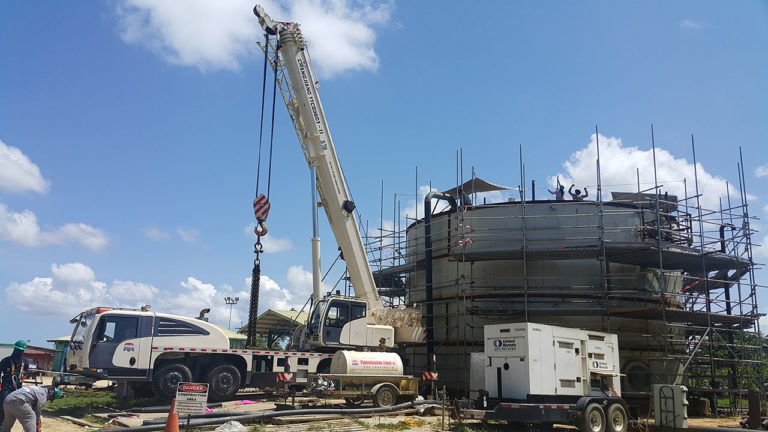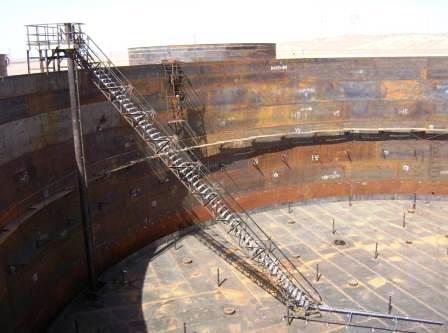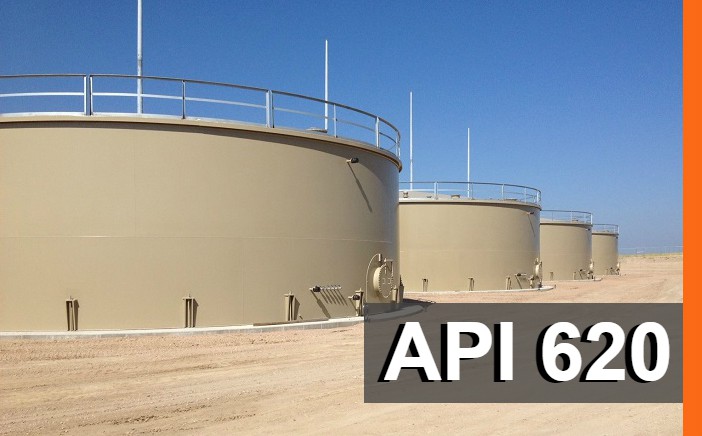Just How Welding Evaluation Works: A Comprehensive Overview for Professionals
Welding inspection plays a crucial role in making certain the safety and reliability of welded frameworks. It includes a systematic technique that consists of both visual evaluation and advanced testing approaches. Experts must familiarize themselves with key criteria and regulations governing the market. Comprehending the usual defects that can develop during welding is important. This guide will certainly check out these elements in information, providing understandings right into the processes that maintain top quality and honesty in welding.
Recognizing the Value of Welding Assessment
While lots of might underestimate the relevance of welding inspection, it plays an essential role in making certain the integrity and security of welded frameworks. Effective welding inspection recognizes possible issues and imperfections that can compromise structural toughness and bring about tragic failings. The inspection process includes different methods, such as aesthetic exams, ultrasonic screening, and radiographic assessments, each adding to the general examination of weld top quality.
In enhancement to protecting the structural honesty, welding assessment assures conformity with sector standards and client specs. By making sure that welds fulfill required features and resistances, assessments assist preserve the reliability and long life of components in numerous applications, from building and construction to aerospace. Furthermore, a rigorous evaluation process promotes a culture of quality and liability amongst welders and suppliers. Ultimately, welding inspection is not just a procedural step; it is a crucial technique that underpins the safety and performance of engineered systems throughout diverse fields.
Secret Criteria and Rules in Welding Assessment
The foundation of efficient welding evaluation rests on adherence to developed requirements and laws. Numerous organizations, such as the American Welding Society (AWS) and the American National Standards Institute (ANSI), stated standards that ensure quality and security in welding practices. Secret standards, such as AWS D1.1 for architectural welding and ASME Area IX for pressure vessels, provide detailed criteria for welding certifications, evaluations, and procedures. Governing frameworks, consisting of those from the Occupational Safety And Security and Health And Wellness Administration (OSHA), required security techniques and worker protections in welding atmospheres. Compliance with these criteria is vital for accomplishing constant weld top quality and minimizing the danger of failings. In addition, worldwide criteria like ISO 3834 better enhance global consistency in welding evaluation methods. Experts need to remain notified about these policies to assure that their inspection approaches align with market assumptions and lawful demands, thus protecting both personnel and structural honesty.
Initial Preparation and Visual Examination Techniques

Effective welding inspection begins with a complete pre-inspection list that guarantees all necessary problems are met before the real inspection happens. Following this preparation, visual defect recognition plays a vital role in evaluating weld high quality, allowing examiners to find issues such as fractures or inappropriate blend. With each other, these strategies develop the foundation for an effective welding assessment process.
Pre-Inspection List
Prior to beginning any welding examination, a comprehensive pre-inspection checklist is necessary to ensure that all needed prep work are completed and that aesthetic inspection techniques are effectively utilized. Crucial element of this checklist consist of verifying the welding procedure requirements (WPS), ensuring all devices is adjusted and in good functioning condition, and validating that the assessor has the called for qualifications. In addition, it is vital to review any previous examination reports and to evaluate the workplace for security threats. The examiner should likewise confirm that all relevant documentation, such as material certifications and evaluation documents, is conveniently available. Finishing this checklist helps to establish a strong foundation for an effective examination procedure, boosting the dependability of the results obtained.
Aesthetic Problem Identification
A successful visual problem recognition process starts with careful first preparation and the application of recognized aesthetic examination methods. Assessors should guarantee that the welding location is clean and well-lit, as sufficient visibility is essential for spotting problems. A thorough examination of the weld joint's surface enables the identification of suspensions, such as fractures, undercuts, or porosity. Inspectors typically use tools like amplifying glasses or mirrors to improve you could try here their view of hard-to-reach locations. Additionally, they ought to be familiar with the certain welding standards and standards pertinent to the job. By sticking to these techniques, assessors can effectively determine possible concerns, safeguarding the stability of the weld and conformity with market criteria.
Non-Destructive Screening Approaches: An Introduction
Non-destructive screening (NDT) techniques play an important function in the welding assessment procedure by ensuring the stability and dependability of welded frameworks without causing any kind of damages (API 650 Welding Inspection). These techniques enable inspectors to examine the top quality of welds while protecting the components being taken a look at. Usual NDT approaches include ultrasonic testing, radiographic screening, magnetic bit screening, and color penetrant screening, each offering special advantages
Ultrasonic testing employs high-frequency audio waves to spot interior problems, while radiographic screening utilizes X-rays or gamma rays to picture the inner framework of welds. Magnetic fragment testing reveals surface area and near-surface defects by using a magnetic field and iron bits to the weld location. Dye penetrant screening highlights surface-breaking flaws through the application of a colored dye. With each other, these NDT methods offer vital insights into weld high quality, allowing experts to make enlightened decisions regarding safety and conformity in welding applications.
Typical Defects and Their Implications
Determining usual issues in bonded joints is vital for keeping architectural honesty and security. Numerous problems can arise throughout the welding procedure, each bring prospective implications for the overall performance of the structure. Porosity, characterized by tiny gas pockets within the weld, can compromise the joint and jeopardize its load-bearing capacity. Splits might create as a result of thermal anxiety or incorrect cooling, resulting in prospective failing under anxiety. Incomplete combination happens when the weld metal does not totally bond with the base product, leading to weak joints that may not hold up against designated loads. Undercutting, where the base steel is eroded, can likewise minimize the efficient cross-section of the weld. Additionally, extreme reinforcement can produce stress and anxiety concentrations that can bring about failing. Recognizing these flaws quickly enables corrective procedures, ensuring the long life and integrity of bonded frameworks in important applications.
Tools and Equipment Utilized in Welding Inspection
Efficient welding inspection depends on a variety of try here specialized devices and devices to ensure the high quality and stability of bonded joints. Vital tools consist of aesthetic examination tools, such as multiplying glasses and borescopes, which enable assessors to very closely check out welds for surface flaws. Non-destructive testing (NDT) approaches, such as ultrasonic testing, radiographic testing, and magnetic bit screening, are essential for recognizing internal defects without harming the product.
Measurement tools, consisting of calipers and weld gauges, assist identify and assess measurements conformity with requirements. In addition, firmness testers evaluate the mechanical properties of welded joints. Personal protective equipment (PPE) is likewise critical, securing the safety of examiners while operating in potentially harmful environments (API 650 Welding Inspection). Each device offers a certain purpose, collectively improving the efficiency of welding examination and adding to the reliability of finished projects
Often Asked Concerns
What Certifications Are Needed to End Up Being a Welding Examiner?
To become a welding assessor, individuals usually need relevant accreditations, such as AWS CWI or CSWIP, in addition to experience in welding processes, engineering concepts, and knowledge of evaluation techniques, safety and security criteria, and suitable codes.
Exactly How Typically Should Welding Inspections Be Conducted?
Welding assessments need to be carried out frequently, ideally at numerous job stages, consisting of pre-weld, during-weld, and post-weld. Frequency might additionally rely on sector criteria, job specifications, and the intricacy of the welds included.
Can Welding Defects Be Fixed After Assessment?

Yes, welding problems can usually be repaired after assessment. Relying on the seriousness and kind of defect, suitable methods such as revamping or extra welding might be utilized to recover structural integrity and security conformity.
What Industries Require Normal Welding Assessments?

Numerous industries, consisting of building and construction, production, aerospace, and auto, require regular welding assessments - API 650 Welding Inspection. These evaluations assure adherence to safety and security criteria and high quality control, reducing threats connected with structural stability and operational performance in bonded elements
How Do I Select a Welding Assessment Service?
To pick a welding examination service, one ought to consider credentials, experience, qualifications, and market credibility. Additionally, reviewing client testimonials and assuring the solution meets relevant requirements can help assure quality evaluations and trusted outcomes.

While numerous might ignore the significance of welding examination, it plays an important role in ensuring the stability and security of bonded frameworks. Trick standards, such as AWS D1.1 try this site for structural welding and ASME Section IX for pressure vessels, give complete requirements for welding credentials, treatments, and evaluations. Efficient welding examination begins with a thorough pre-inspection list that assures all essential conditions are met prior to the actual inspection takes location. Before starting any kind of welding evaluation, a complete pre-inspection checklist is crucial to assure that all needed preparations are finished and that visual assessment techniques are properly employed. Non-destructive testing (NDT) methods play a crucial function in the welding inspection process by guaranteeing the stability and integrity of welded structures without causing any type of damages.